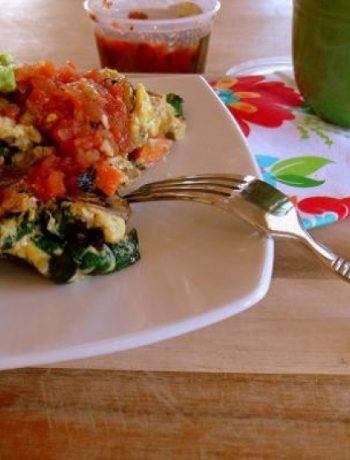
TipWhen Is New Year’s Eve?
New Year’s Eve is on Dec. 31. This year, New Year’s Eve falls on a Sunday.
Read More
1 of 8
Next: What Is New Year’s Eve?
TipWhat Is New Year’s Eve?
New Year’s Eve is the last day of the year on the Gregorian calendar.
Read More
2 of 8
Next: How to Celebrate New Year’s Eve
TipHow to Celebrate New Year’s Eve
New Year’s Eve is typically celebrated with a party that culminates in a countdown. Many people drink champagne, dance, enjoy music, and light fireworks. Various “good luck foods” like black-eyed peas and grapes are also served to ring in the new year. In the U.S., the old Scottish song “Auld Lang Syne” is sung as partygoers exchange hugs and kisses at midnight.
Read More
3 of 8
Next: Who Celebrates New Year’s Eve?
TipWho Celebrates New Year’s Eve?
Anyone can celebrate New Year’s Eve if they follow the Gregorian calendar.
Read More
4 of 8
Next: Why Do We Celebrate New Year’s Eve on Dec. 31?
TipWhy Do We Celebrate New Year’s Eve on Dec. 31?
Dec. 31 is the last day of the Gregorian calendar. It precedes Jan. 1, the first day of a new year (New Year’s Day).
Read More
5 of 8
Next: How to Store Eggs
TipHow to Store Eggs
Eggs should keep a consistent and low temperature. This is best achieved by placing their carton in the center of your fridge. The eggs should also remain in their original packaging to avoid the absorption of strong odors. It is wise to follow the “best by” date to determine overall freshness, but eggs can be tested by simply dropping them into a bowl of water. Older eggs will float while fresh eggs will sink. This is due to the size of their air cells, which gradually increase over time. Cooked eggs have a refrigerator shelf life of no more than four days, while hard-boiled eggs, peeled or unpeeled, are safe to consume up to one week after they’re prepared.
Read More
6 of 8
Next: How to Cook Eggs
TipHow to Cook Eggs
The beauty of an egg is its versatility. Eggs can be cooked in a variety of ways. Here are some tips in accomplishing the four most common preparations. Scrambled: Whip your eggs in a bowl. The consistency of your scrambled eggs is a personal preference, though it seems like the majority of breakfast connoisseurs enjoy a more runny and fluffy option. In this case, add about ¼ cup of milk for every four eggs. This will help to thin the mix. Feel free to also season with salt and pepper (or stir in cream cheese for added decadence). Grease a skillet with butter over medium heat and pour in the egg mixture. As the eggs begin to cook, begin to pull and fold the eggs with a spatula until it forms curds. Do not stir constantly. Once the egg is cooked to your liking, remove from heat and serve. Hard-boiled: Fill a pot that covers your eggs by about two inches. Remove the eggs and bring the water to a boil. Once the water begins to boil, carefully drop in the eggs and leave them for 10-12 minutes. For easy peeling, give the eggs an immediate ice bath after the cooking time is completed. For soft-boiled eggs, follow the same process, but cut the cooking time in half. Poached: Add a dash of vinegar to a pan filled with steadily simmering water. Crack eggs individually into a dish or small cup. With a spatula, create a gentle whirlpool in the pan. Slowly add the egg, whites first, into the water and allow to cook for three minutes. Remove the egg with a slotted spoon and immediately transfer to kitchen paper to drain the water. Sunny Side Up/Over Easy/Medium/Hard: For each of these preparations, you are cracking an egg directly into a greased frying pan. For sunny side up, no flipping is involved. Simply allow the edges to fry until they’re golden brown. To achieve an over easy egg, flip a sunny side up egg and cook until a thin film appears over the yolk. The yolk should still be runny upon serving. An over medium egg is flipped, fried, and cooked longer until the yolk is still slightly runny. An over hard is cooked until the yolk is hard.
Read More
7 of 8
Next: How to Freeze Eggs
TipHow to Freeze Eggs
Eggs can easily be frozen, but instructions vary based on the egg’s physical state. As a general rule, uncooked eggs in their shells should not be frozen. They must be cracked first and have their contents frozen. Uncooked whole eggs: The eggs must be removed from their shells, blended, and poured into containers that can seal tightly. Uncooked egg whites: The same process as whole eggs, but you can freeze whites in ice cube trays before transferring them to an airtight container. This speeds up the thawing process and can help with measuring. Uncooked yolks: Egg yolks alone can turn extremely gelatinous if frozen. For use in savory dishes, add ⅛ teaspoon of salt per four egg yolks. Substitute the salt for sugar for use in sweet dishes and/or desserts. Cooked eggs: Scrambled eggs are fine to freeze, but it is advised to not freeze cooked egg whites. They become too watery and rubbery if not mixed with the yolk. Hard-boiled eggs: As mentioned above, it is best to not freeze hard-boiled eggs because cooked whites become watery and rubbery when frozen.
Read More
8 of 8
Next: When Is New Year’s Eve?
Inspired by McDonald’s McGriddle, this breakfasty corn dog has the winning sweet-savory combination of juicy breakfast sausage links dipped in a maple syrup–cornmeal batter and deep-fried to golden brown perfection. Serve extra maple syrup on the side for dunking. Special equipment: You will need a deep-frying/candy thermometer and a tall, narrow container or drinking glass, such as a pint glass, for this recipe. Candy-apple craft sticks give these breakfast corn dogs an authentic state-fair feel. Look for them next to the apples in the produce section of the grocery store or order them online. If you can’t find them, use 6-inch wood skewers or wood coffee-stirrers instead. Game plan: The fried corn dogs can be frozen for up to 2 weeks. To reheat, place them on a baking sheet and bake in a 350°F oven for 20 minutes or until heated through. This recipe was featured as part of our Make Your Own Corn Dogs project. Craving the real thing? Try our classic, easy corn dog recipe.
Ingredients:
- 14 small breakfast sausage links (about 12 ounces)
- 2 quarts vegetable oil, for frying
- 14 candy-apple craft sticks
- 1 cup fine- or medium-ground yellow cornmeal
- 1 cup all-purpose flour
- 1 tablespoon baking powder
- 1/2 teaspoon fine salt
- 1 cup whole milk
- 2 large eggs
- 2 tablespoons maple syrup, plus more for dipping
- 2 tablespoons granulated sugar
Instructions:
- 1Heat the oven to 250°F and arrange a rack in the middle. Set a wire rack over a baking sheet; set aside.
- 2Cook the sausages according to the package directions. Place on a paper-towel-lined baking sheet and set aside to cool.
- 3Pour the oil into a Dutch oven or a large, heavy-bottomed pot. Heat over medium-high heat until the temperature reaches 360°F on a deep-frying/candy thermometer.
- 4Meanwhile, insert a craft stick lengthwise into each sausage (try to keep the stick aligned in the center of the sausage), leaving about 2 inches of the stick exposed at the bottom; set aside.
- 5When the oil is almost ready (about 325°F), whisk the cornmeal, flour, baking powder, and salt together in a medium bowl. Whisk the milk, eggs, maple syrup, and sugar together in a large bowl until combined and the sugar has dissolved. Add the cornmeal mixture to the milk mixture and stir with a rubber spatula just until a smooth batter forms. Pour some of the batter into a tall, narrow container or drinking glass, leaving 1 inch of room at the top.
- 6When the oil is ready, evenly dip a sausage into the glass of batter by holding the stick and rotating the sausage as needed until it’s completely covered with batter. Immediately place into the hot oil. Repeat with 3 more sausages. Fry, turning occasionally, until light golden brown all over, about 3 minutes. Using tongs, transfer the breakfast corn dogs to the wire rack on the baking sheet and place in the oven.
- 7Repeat with the remaining sausages, working with 4 at a time, refilling the glass with batter as needed, and letting the oil return to 360°F between each batch. (When you reach the last few sausages, you may need to tilt the glass sideways while rotating the sausages to evenly coat them with batter.) Serve immediately with maple syrup for dipping.
- Share on Facebook
- Share on Reddit
- Save (184)




No Comments